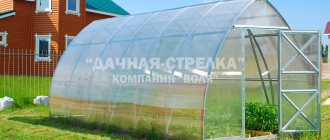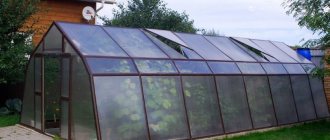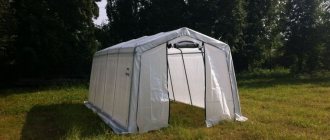Arrangement of seedlings
We take the seedlings and arrange them so that all the plants get the light and the leaves of the seedlings do not intertwine or even touch. This is necessary to provide light and warmth. This will be the best care.
The plant is growing and needs to be planted in time in the main soil - greenhouse soil from the container, because the stems can stretch out enough and even 2-3 fruits will form on one cluster, and the plant itself will spend entirely on the formation of these particular fruits. We constantly remove small stepsons. The upper stepson can be left; it forms a second stem located next to the flower stem.
When transporting to the dacha, so that the plants do not break and feel comfortable, try not to water the seedlings a few days before transportation; it is better to dry them, the stems will not be brittle and the plant will better tolerate a stressful situation.
From the middle or end of May, you can safely begin planting tomato seedlings in a film greenhouse or greenhouse. If you have a warm greenhouse, heated, and if you have a warm heated bed, using biofuel, based on plant residues, then you can start planting tomatoes in early May. It all depends on the specific greenhouse and weather conditions.
A prerequisite for good production and good fruiting is that soil and bed preparation must be carried out immediately before planting tomato seedlings. We dig up the ridge, loosen it, level it with a rake, then you need to add mineral fertilizers so that fruiting is abundant and good.
Features of farm greenhouses
First of all, it should be noted that farm greenhouses are most often permanent structures, which can be of two types - semi-industrial (up to 500 m2 in area) and industrial (from 500 m2). All of them are prefabricated and stationary and have many advantages over small gardening structures.
Semi-industrial farm greenhouse (film)
Important! One of the most important features of a farm greenhouse is the presence of a solid foundation. It can be either slab or strip. Pile foundations are suitable for small-sized structures. For example, for stationary country greenhouses.
Tunnel farming greenhouses TEDEN-500
Farm greenhouse Bitunel SPK “Niva” – Niva Greenhouse
High demands are placed on the farm foundation, as it must successfully withstand significant weight loads. The frames of such structures are made of profile pipes, which can be either round (25-38 mm) or rectangular in cross-section. They produce galvanized or painted frame elements.
Example of a wooden frame for a farm greenhouse
Metal frame 9x5x18 for a farm greenhouse
Cellular polycarbonate is used as a coating. To set up semi-industrial greenhouses, sheets with a thickness of 6-8 mm are required. For industrial – from 8 mm. Higher requirements for the thickness of polycarbonate are due to the fact that farm greenhouses, unlike country houses, have a significantly larger area. More durable material can withstand significant snow and wind loads.
Farmer's polycarbonate greenhouses are increasingly appearing on the market
The sizes of farm greenhouses can be very different - 8x12 m, 8x16 m, 12x40 m, etc. The height of the structures is at least 2.5 m. The shape is predominantly arched, and it was not chosen by chance. The fact is that the sloping walls and roof ensure the sliding of snow and water, “streamlining” for winds. Therefore, arched greenhouses are the most convenient and reliable to use.
Dimensions of industrial multi-span greenhouses "Atlant"
Due to the significant height of the frame, it becomes possible to grow tall plants. There are winter farm greenhouses that provide uninterrupted heating of the interior space and soil. The purpose of such premises can be very different: growing crops, using them as a poultry house or pigsty, garage, warehouse.
Gothic greenhouses "Atlant" (polycarbonate)
Prices for farm greenhouses
farm greenhouses
Equipment and components for farm greenhouses
There are several of them; let’s take a closer look at the features of each option.
Ventilation systems
Any farm greenhouse should be equipped with windows for ventilation. Maintaining the optimal temperature for plants should occur without human intervention. For this purpose, automatic ventilation systems have been developed, including a complex of vents and sensors. Each window is equipped with a special automatic pusher.
Automatic opening of vents in a greenhouse
Mechanical ventilator for greenhouses - operating instructions
The operating principle of this device is based on temperature changes in the internal space of the greenhouse. Sensors indicate that it has increased. The mechanism is activated, and the pusher either extends, thereby opening the window, or retracts, closing it. Automatic pushers can be made of different materials, but their operating principle is the same. Electric and hydraulic automatic machines are available for sale. The material of manufacture is metal or bimetal.
Ventilation of greenhouses with roll-up film curtains
Prices for ventilators for greenhouses
ventilator for greenhouses
Evaporative cooling systems (fogging)
Equipment of this type is necessary to maintain an optimal level of air humidity in the greenhouse and treat plants with protective agents against pests and diseases. A special technique (fogger) creates an aerosol fog in the room, consisting of tiny drops of water (or any aqueous solutions) with a diameter of 0 to 49-50 microns.
Operation of the fogging system
If a protective composition was used to combat insects, they will die even on the fly. Pests crawling on plants will be destroyed after the moisture subsides. The microscopic size of the droplets ensures their rapid atomization and uniform distribution over the entire area of the room. Using a fogger, you can quickly treat and disinfect all parts of the greenhouse structure. The fog will settle not only on the top of the plant leaves, but also on the bottom. Therefore, with the help of this equipment it is possible to carry out the highest quality disinfection and pest control.
Fogging system - evaporative cooling of greenhouses - SIOT
Heating systems
Farm greenhouses can be heated using gas, electricity, or solid fuel. Steam, air or water are used as coolant. Gas heating is considered the most economical.
Water heating of a farm greenhouse
Greenhouse manufacturers also offer heating systems consisting of:
- pipes;
- boiler;
- heating radiators;
- temperature sensors;
- relays and other components.
Heating systems can be single-circuit or double-circuit. The main selection criterion is the rate of heating of the internal space of the greenhouse. In this regard, air heating is the leader. With its help you can raise the air temperature in just a few minutes.
Scheme of a single-circuit greenhouse heating system
Water heating is considered the most reliable. One of its advantages is good heat dissipation. After the boiler is turned off, the system continues to heat the room. Water heating can be implemented in different ways - using gas and electric, solid fuel boilers.
Greenhouse water heating scheme
A modern solution is IR (infrared) heating. Its advantage is uniform and rapid heating of the room. The heated elements of the greenhouse structure begin to give off heat, which increases the productivity of the IR system. Infrared heaters are used as equipment. There is no need to install a complex pipeline system, and the soil can be heated.
IR heaters in a greenhouse
IR heater device
Lighting systems
The main element of the lighting system is the lamp. At the moment, a device capable of 100% replacing sunlight has not yet been invented. Therefore, many owners of farm greenhouses, trying to provide the most comfortable conditions for their plants, are forced to combine different types of lighting. They have to choose from several types of lamps.
Lanterns for greenhouses
Table. Types of lamps for lighting farm greenhouses.
| Lamp type | Characteristics |
| Luminescent | It is considered a universal device for lighting greenhouses of any type and size. The best result is achieved by combining white and cold light fluorescent lamps. The average service life of one unit is up to 2 thousand hours. |
| Ultraviolet | It is used for disinfection purposes, as it emits a light spectrum that is harmful to harmful bacteria. |
| Mercury (DRLF) | They are actively used by farmers growing light-loving plants. The radiation spectrum promotes accelerated ripening of fruits. |
| High pressure sodium | In addition to high-quality lighting of the room, it provides heating, as it releases a significant amount of heat during operation. Several negative aspects have been noticed when using these lamps - they attract insects and have an adverse effect on the development of young plants. |
| Light-emitting diode (LED) | It is steadily gaining popularity, as it allows you to obtain the spectrum of light radiation necessary at different periods of plant growth. Advantages include impact resistance and long service life. |
| Infrared | They are considered among the ideal solutions for lighting farm greenhouses. Provides conditions as close to natural as possible. |
LED lighting for farms
Prices for phytolamps
phytolamp for plants
Curtain systems
Any semi-industrial or industrial type structure is large and requires a curtain system. This system ensures the maintenance of an optimal microclimate for plants.
There are two types of such systems:
- horizontal;
- vertical.
Horizontal curtain system
Vertical shading
Any of them could be:
- cable;
- beam.
Each of them can be automated and have a single or double curtain function. A special opaque fabric is used for shading. The system consists of a set of drive mechanisms. Using vertical systems, you can divide the greenhouse space into several zones and in each of them provide the microclimate necessary for a given type of plant.
Shading system in a farm greenhouse
Important! In addition to the above, farm greenhouses can use automated microclimate control systems, feeding plants with carbon dioxide, electric supplementary lighting, drip irrigation, additional humidification, and air recirculation.
Many manufacturers of farm greenhouses offer a set of technological equipment necessary for maintaining the premises and carrying out work.
Irrigation kit based on drippers integrated into the pipe
The set may include:
- trays (including hanging);
- trolleys for transporting goods;
- equipment for watering and spraying;
- plant hanging systems;
- plant staking kits;
- sprayers.
Trays for growing
Greenhouse trolley
Set for gartering plants in a greenhouse
Each manufacturer strives in some way to distinguish its products from the crowd and constantly makes improvements to the design and equipment of its greenhouses. In order to better understand all the features of these designs, you need to familiarize yourself with the most popular models.
Types of films
Modern technologies do not stand still. Many farmers have already appreciated the benefits of new types of film. This material is quite durable and, in addition, it has the necessary transparency. Manufacturers currently offer a wide range of films for greenhouses, including:
- polyethylene;
- PVC;
- reinforced film;
Each of these types has a number of advantages and some disadvantages.
Polyethylene material
Polyethylene has long been actively used by gardeners to create greenhouses. The reason for such long-term popularity is its low price and light weight. The material has a thickness from 15 to 300 microns. For greenhouses, the optimal thickness is 150–200 microns. In this case, with a relatively good resistance of the film to weather conditions, a sufficient amount of light passes through it. But this material also comes with many disadvantages:
- plastic film can withstand no more than one season;
- subject to stretching and sagging;
- the material has low hydrophilicity, this causes the formation of water droplets that are harmful to plants;
- due to the accumulation of electrostatic charge, dust is attracted, which over time reduces the transparency of the film;
- transmits ultraviolet radiation up to 80%.
PVC covering
Essentially, PVC products are at a different level of strength. The main advantage of PVC material is its high thermal insulation properties. This quality is especially valued when growing eggplants and peppers.
The disadvantages of PVC film include:
- higher price;
- low transmittance of ultraviolet rays (20%), which is not suitable for some types of crops;
- the ability to accumulate a static charge, which attracts dust, which leads to rapid contamination of the film;
- the material requires regular tightening.
Reinforced film
The reinforced film is characterized by high strength and light transmittance of 70%. In addition, this film can withstand a fairly wide temperature range, which makes it suitable for all climate zones.
The material can last from 3 to 6 years. The disadvantages include its higher cost.
Stable hydrophilic
In addition to these materials, a stable hydrophilic film is available on the market. Advantages of this product:
- resistance to light rays;
- no condensation on the surface;
- antistatic additives prevent the rapid accumulation of dust;
- low thermal conductivity.
All this helps to increase the productivity of cultivated plants. The thickness of the product ranges from 80 to 150 microns. Warranty up to 3 years.
Types of greenhouse structures
Farm greenhouses generally differ in type of construction.
Among them are usually distinguished:
- lean-to frames with earthen filling: such greenhouses are the simplest options with the most affordable cost for the farmer, but they are characterized by minimal conditions for growing crops;
- a gable structure with a full roof, which is formed by greenhouse frames - is a traditional option; Also, in large-scale farms, gable greenhouses are used, characterized by the presence of main walls.
Greenhouse structures are also divided according to the type of space organized inside:
- Shelving. Such designs allow you to grow plants on shelves that are equipped with comfortable sides.
- Rackless. These greenhouses are characterized by greater cheapness, since crops grow on the ground.











